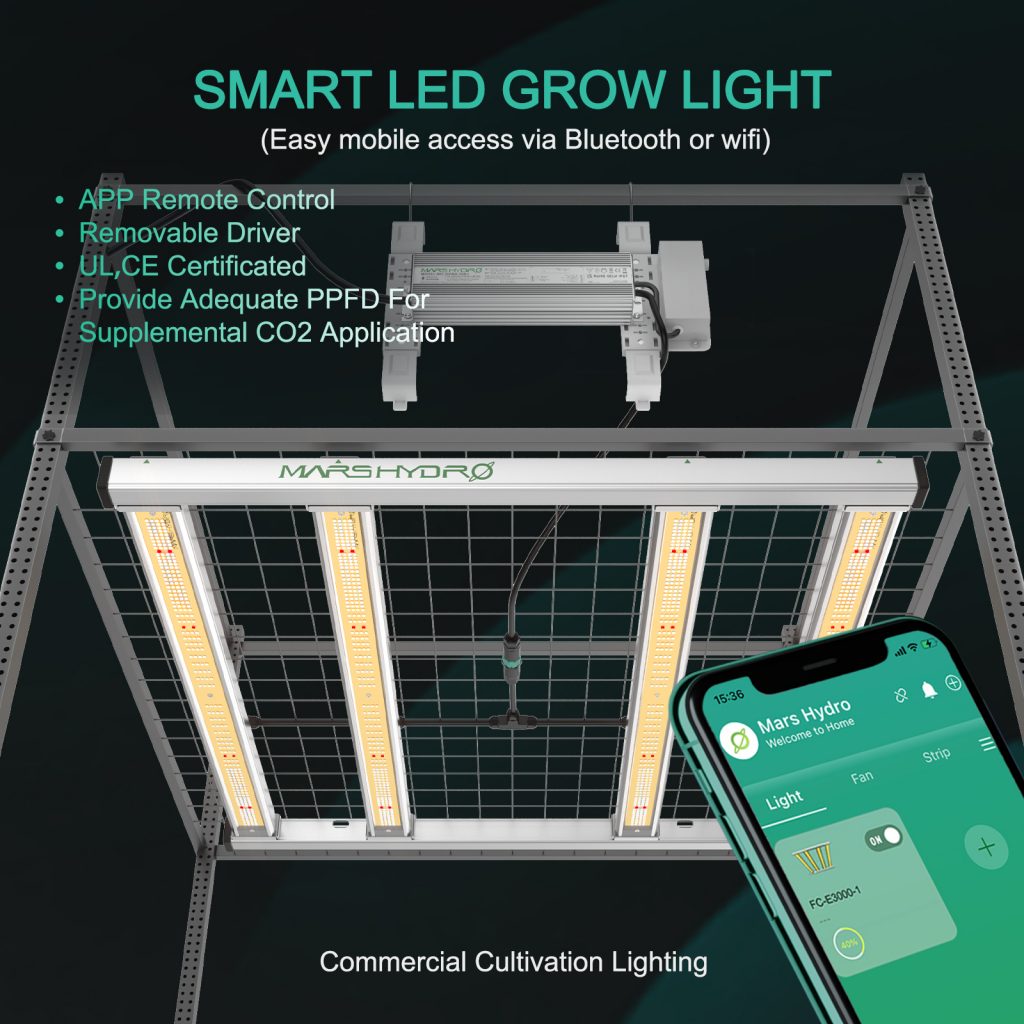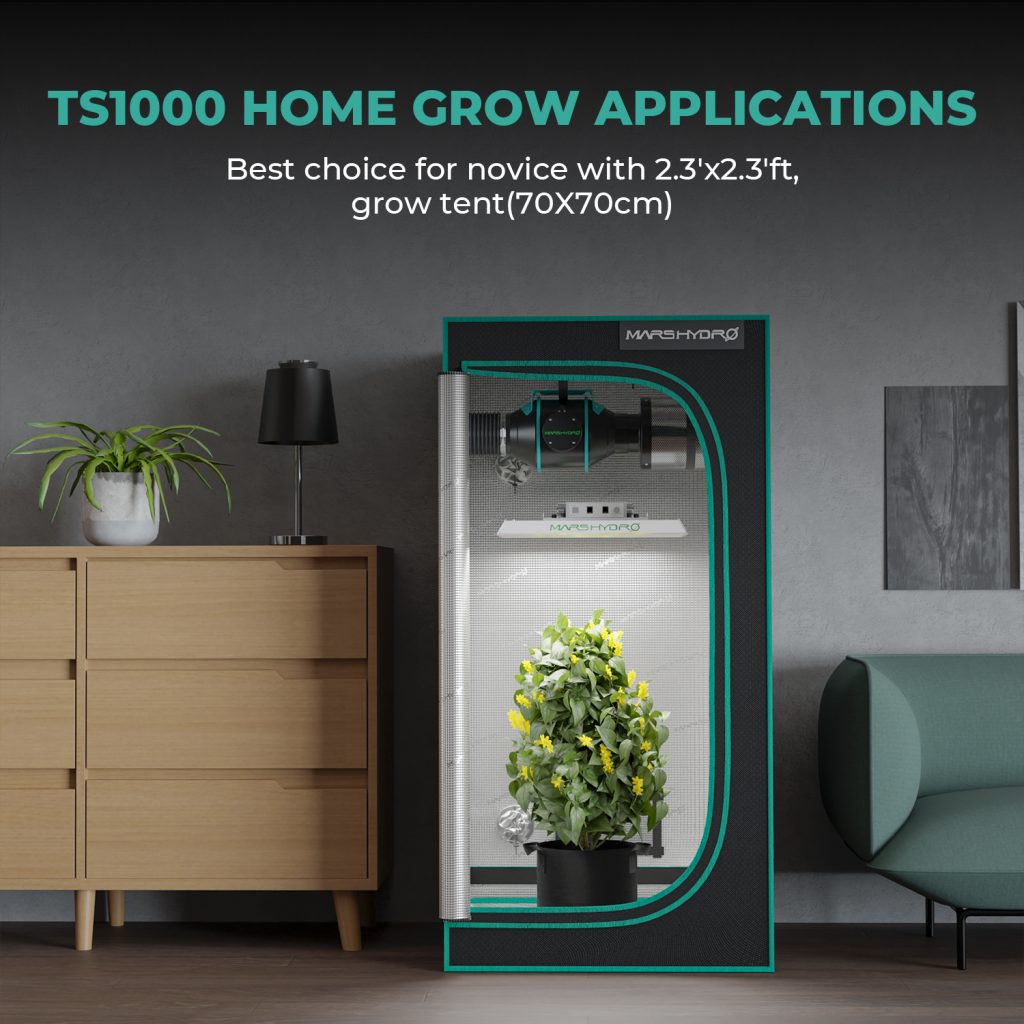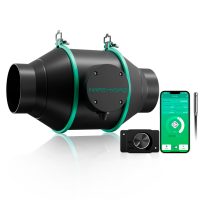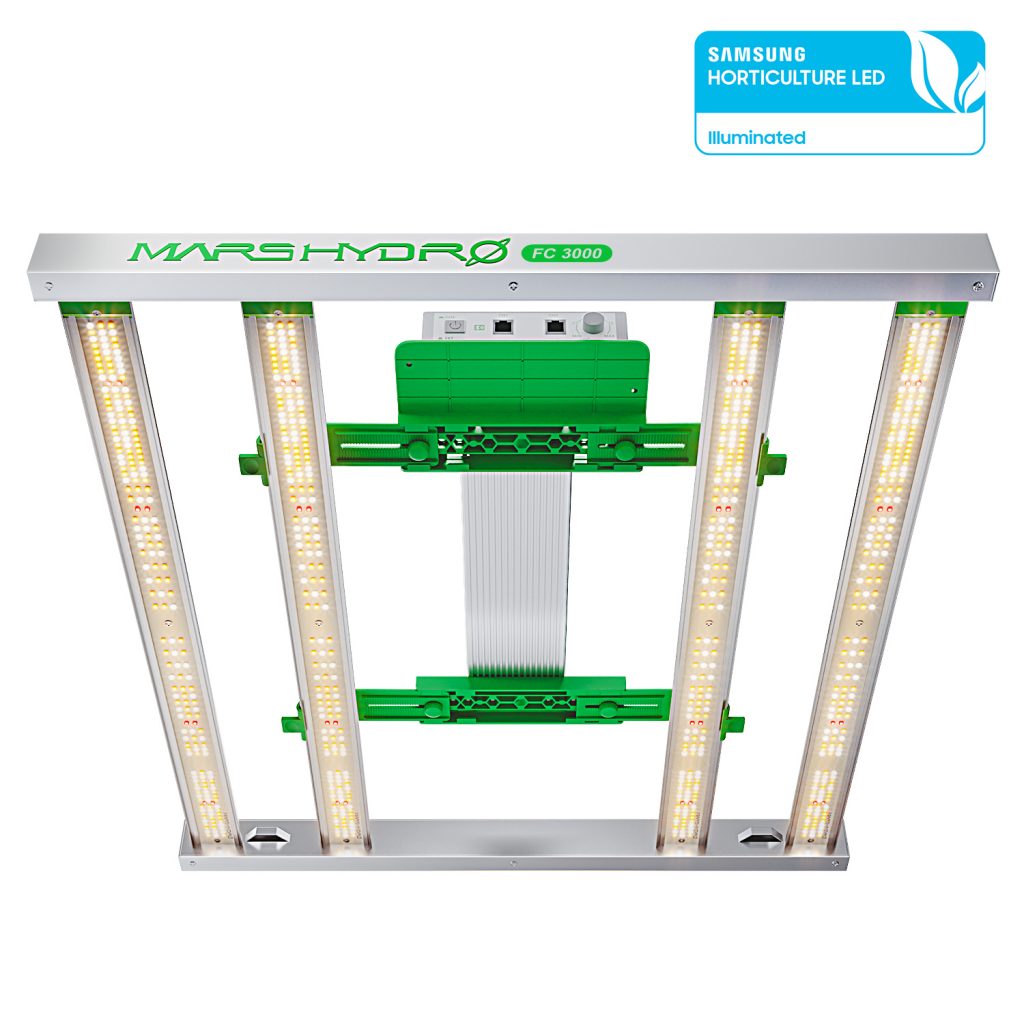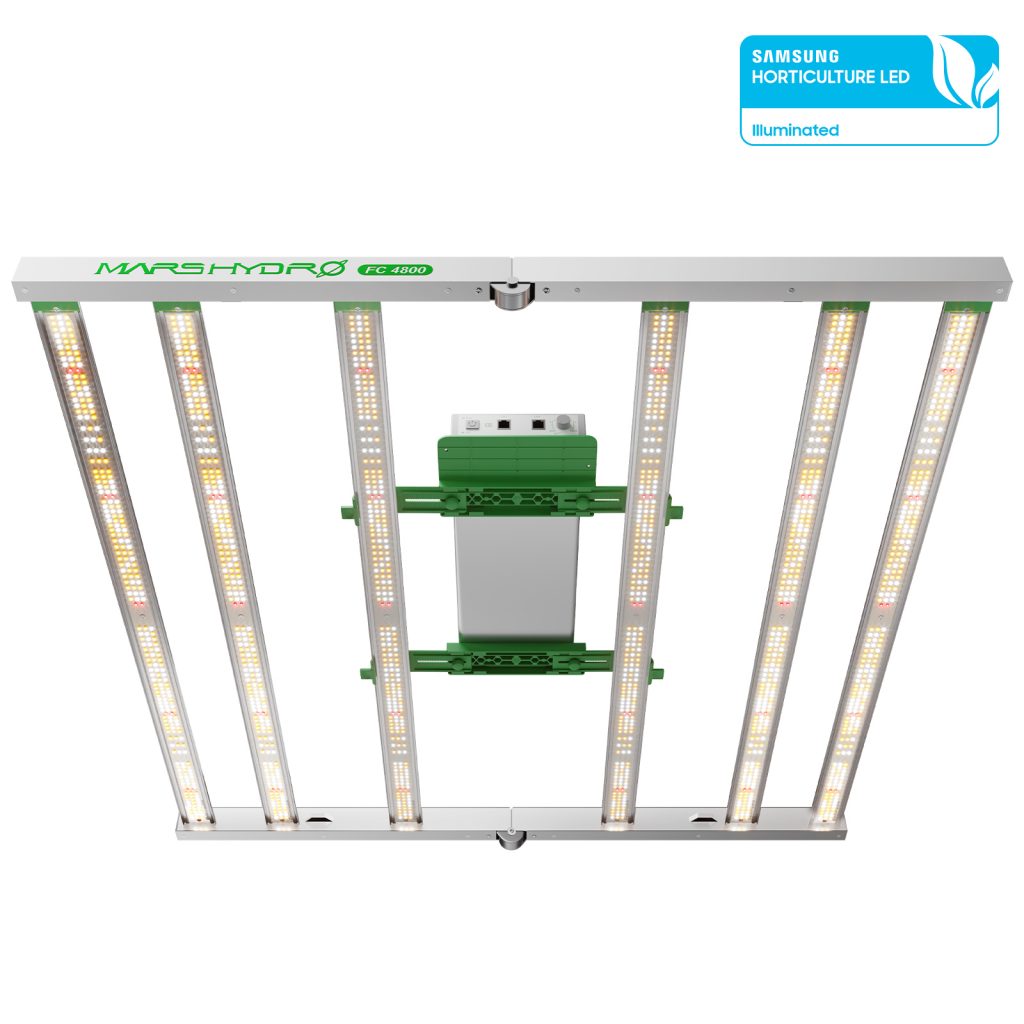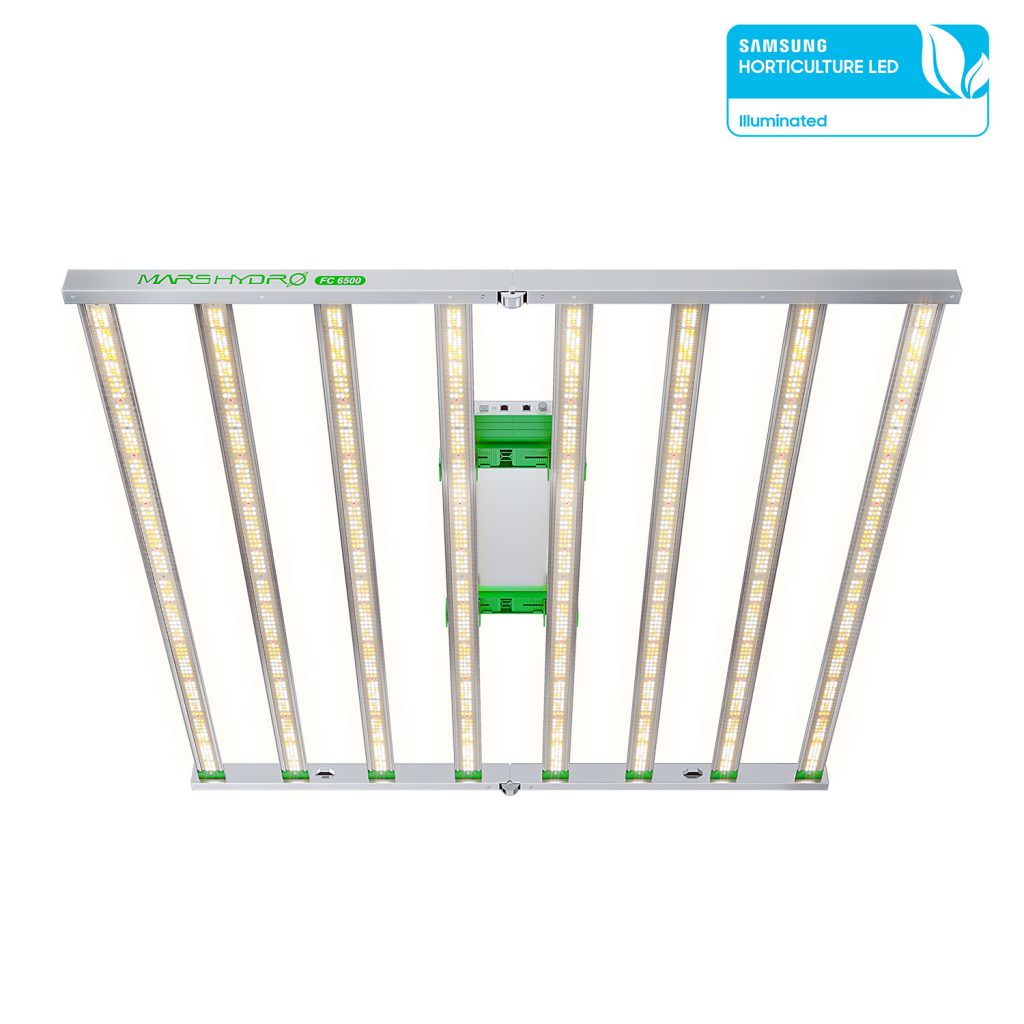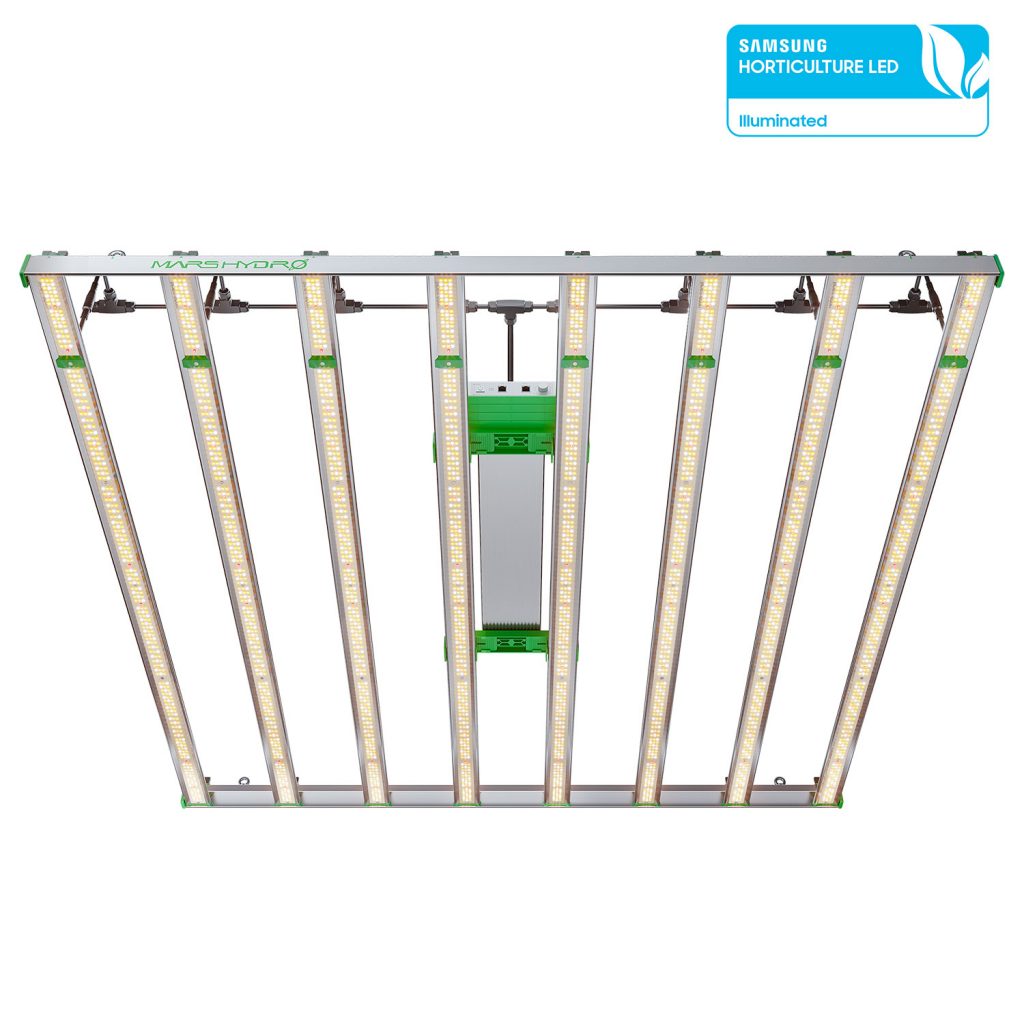Free Shipping & No Vat/Tax For All Products
Free Shipping & No Vat/Tax For All Products
- Sale
- LED GROW LIGHT
- GARDEN
- SMART GROW SYSTEM
SMART FC SAMSUNG GROW LIGHTS
- GROW TENT
- GROW TENT KITS
- VENTILATION
- Grow Accessories
Hydroponic Accessories
- BLOG
- How to Grow Potatoes Indoors? The Secrets to a Bountiful Harvest!
- Growing Tomatoes in Grow Bags: Everything You Need to Know
- Do LED Grow Light Use A Lot of Electricity? The Truth You Need to Know
- Giveaway! | The Ultimate Guide on How to Harvest Your Herb
- The Best Mars Hydro UV&IR Supplemental LED Grow Light
- Is UV light good for plants?
- 8 Tips for Keeping Your Houseplants Healthy
- LED Grow Light Buying Guide- How to Choose The Right Grow Light
- What are the advantages of choosing products from Mars Hydro?
- For a 2×2 Growing Area, What Product Should I Choose From Mars Hydro?
- Should You Be Leaving Grow Lights On 24 Hours a Day?
- Indoor grow lights, which is best for plants?
- Plant Grow Light Running Cost Calculator
- Growing Pepper with led grow lights
- Tips To Make The Most Of LED Grow Lights
- SUPPORT
- CONTACT US
FC Series LED Grow Lights
- All products
- Adlite Supplemental Lights8 products
- VG Series LED Grow Lights3 products
- LED Grow Lights24 products
- FC-EVO LED Grow Lights7 products
- TS Series LED Grow Lights5 products
- FC-E Series LED Grow Lights6 products
- FC Series LED Grow Lights4 products
- SP Series LED Grow Lights1 product
- Smart Grow System7 products
- UV & IR LED Light Bars5 products
- Grow Tent7 products
- Light + Tent Combo0 products
- Full Grow Tent Kits28 products
- Inline Duct Fan & Filter Combo17 products
- Accessories19 products
- Official Second-hand Items2 products
- Sale4 products
- ALL PRODUCTS95 products
BEST SAMSUNG CHIP HIGH PPFD LIGHTS
Want a high yield growing? Start with FC LED grow light, offering you a uniform & high penetration lighting

Remote Control
Manage & monitor your garden from anywhere, at any time, using just your phone.
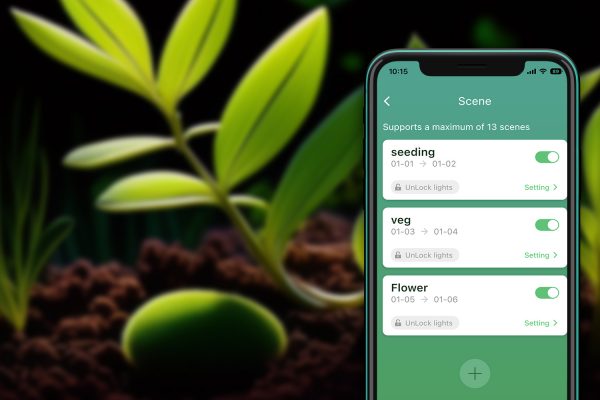
Tailored Schedule
Create a personalized growth plan by configuring dimming, timing, and climate triggers.
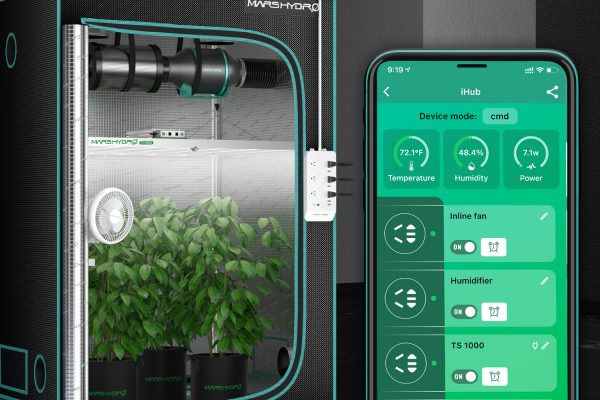
Integrated Smart Grow
Enjoy a fully automated indoor grow setup where every aspect of your cultivation is intelligently optimized.
WHICH SMART FC LIGHT IS RIGHT FOR YOU?
FC 3000 vs FC 4800 vs FC 6500 vs FC 8000
300W±5%@120-277V
Wattage
Samsung Lm301B
Chip Brand
854μmol/S
2.85μmol/j
3.0g/W
Max Yield
100x100x180cm Tent
4'' Fan Kits
Recommend
Mars Hydro Samsung FC4800 480W LED Grow Light – Best Yield Lamp for 4×4 Grow Tent
480W±5%@AC120-277V
Wattage
Samsung Lm301B
Chip Brand
1366μmol/S
2.85μmol/j
3.0g/W
Max Yield
120x120x200cm Tent
6'' Fan Kits
Recommend
730W±5%@AC120-277V
Wattage
Samsung lm301B
Chip Brand
2079μmol/S
2.85μmol/j
3.0g/W
Max Yield
150x150x200cm Tent
6'' Fan Kits
Recommend
Mars Hydro Smart FC8000 Samsung LM301B 800W CO2 Commercial LED Grow Light – Best Yield Lamp for 5×5 Grow Tent
800W±5%@100-277V
Wattage
Samsung lm301B
Chip Brand
2309μmol/S
2.9μmol/j
3.0g/W
Max Yield
150x150x200cm Tent
6'' Fan Kits
Recommend
SMART FC8000 SAMSUNG 800W LED
Good for all stages from seedling to harvest

Full Spectrum
660-665nm, meet plants' needs in all growth stages.

Coverage
Best for 150x150cm area plants.

Dimmable
Adjust the brightness from 10% to 100% at you will.

Uniform Lighting
Helping growing health even the corner plants.
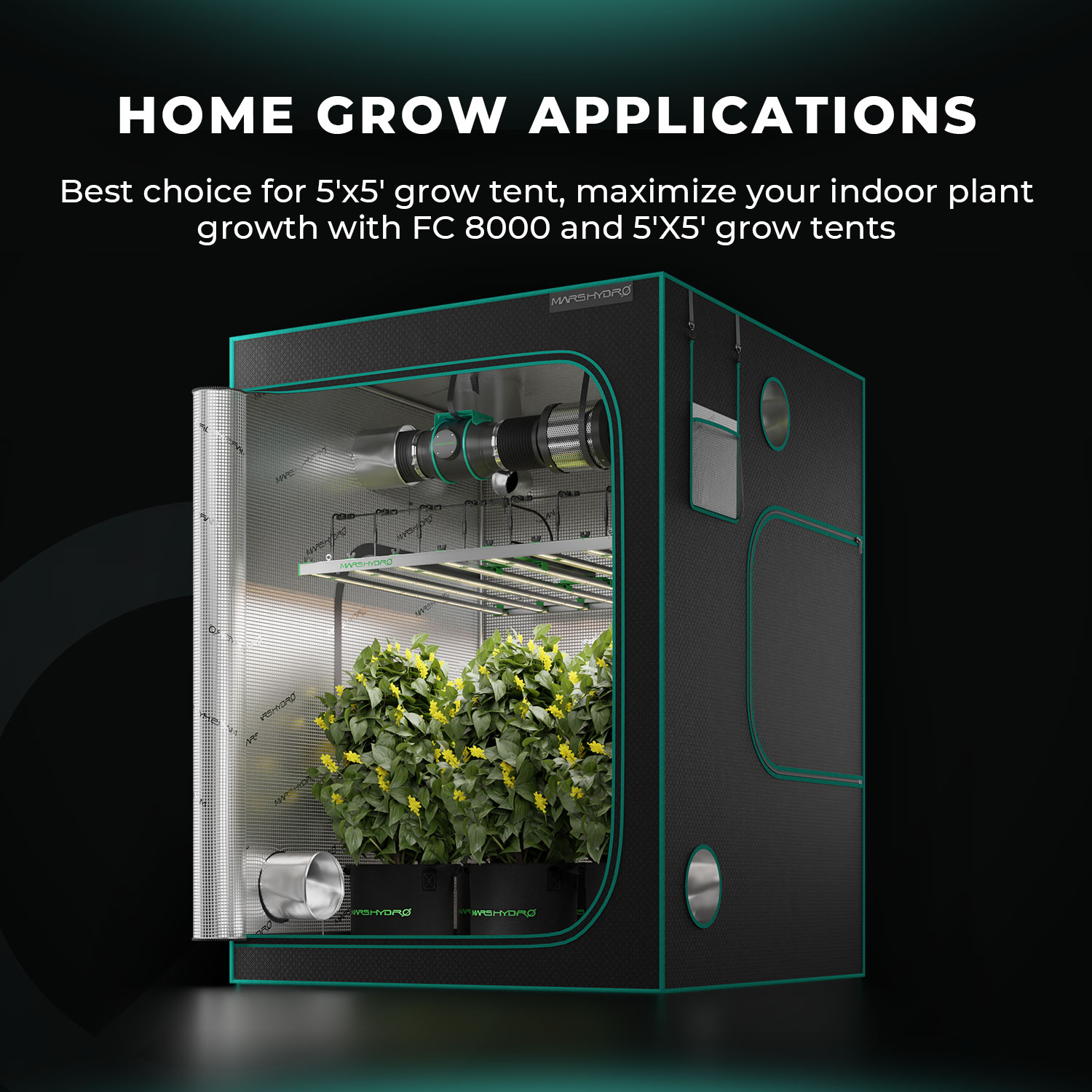
QUESTIONS YOU MAY WANT TO KNOW
LED grow lights provide an efficient and long-lasting lighting solution for indoor gardening. They offer the flexibility full spectrum to your plants’ specific needs, resulting in healthier growth, increased yields, and more successful indoor gardens.
1. Energy Efficiency: LED grow lights are highly energy-efficient compared to traditional lighting systems such as incandescent or fluorescent lights. LEDs consume less electricity while producing the same amount of light, resulting in lower energy bills and reduced environmental impact.
2. Plants loved full Spectrum: Different plant species have different light requirements during different stages of growth, and LED lights provide full spectrum to match those needs. This flexibility promotes healthier and more productive plants.
3. Longer Lifespan: LED grow lights have a significantly longer lifespan compared to other lighting options. They can last up to 50,000 hours or more, depending on the quality of the LEDs. This means you won’t have to replace them as frequently, saving you money in the long run.
4. Heat Management: LED grow lights generate less heat compared to traditional lighting systems. This is beneficial for indoor gardening because it reduces the risk of heat damage to your plants and helps maintain optimal growing temperatures in your grow space. Additionally, the lower heat output reduces the need for additional cooling equipment, saving you money on ventilation and air conditioning costs.
5. Compact Design: LED grow lights are available in various compact and lightweight designs, making them suitable for smaller indoor spaces. They can be easily mounted or hung, allowing you to maximize vertical growing space and optimize light distribution to your plants.
6. Plant-Specific Features: Some LED grow lights offer additional features such as adjustable intensity, built-in timers, and automated lighting schedules. These features provide convenience and help simulate natural sunlight patterns, promoting healthy growth and development of your plants.
When choosing a LED grow light, there are several important factors to consider to ensure you select a good one for your indoor gardening needs. Here are some key points to keep in mind:
1. Light spectrum: Plants require different light wavelengths for various stages of growth. Look for a grow light that provides a full spectrum, including both blue and red wavelengths.
2. Wattage and coverage area: Consider the size of your grow space and the number of plants you plan to cultivate. Ensure the LED grow light you choose has sufficient wattage and coverage area to adequately cover and provide light for your plants. The manufacturer should provide recommendations for the maximum coverage area based on the light’s specifications.
3. Energy efficiency: LED grow lights are known for their energy efficiency compared to other lighting options. Look for lights that have a high energy efficiency rating, such as those labeled as “Energy Star” or with high efficacy (measured in micromoles per joule, μmol/J). Energy-efficient lights will help you save on electricity costs in the long run.
4. Cooling system: LED lights can generate heat, so it’s important to choose a model with an effective cooling system to prevent overheating. Look for grow lights with built-in fans, heat sinks, or other cooling mechanisms to ensure proper heat dissipation and extend the lifespan of the light.
5. Durability and lifespan: Check customer reviews and ratings to assess the durability and reliability of the LED grow light you are considering. A good quality light should have a long lifespan (often stated in hours of operation) and be built with high-quality components.
6. Dimmability and control features: Some LED grow lights offer dimming options or control features that allow you to adjust the intensity of the light. This flexibility can be beneficial for different plant species and growth stages.
7. Price and warranty: LED grow lights come in various price ranges. While it’s tempting to opt for cheaper options, prioritize quality and reliability. Look for lights that offer a warranty to protect your investment and ensure you can get support if any issues arise.
8. Reviews and recommendations: Read reviews and seek recommendations from experienced indoor gardeners or horticultural communities. Real-life experiences and feedback can provide valuable insights into the performance and suitability of different LED grow lights.
FC3000: 71*68*12cm, 11.58kg
FC4800:90*65*14cm, 16.38kg
FC6500: 117*79*14cm, 25.88kg
FC8000: 119*32*25cm, 19.04kg
Yes, you can use the connection wire to connect two lights, then control the smart light(main light) on phone
FC series led grow lights don’t have UV & IR. You can add Mars Hydro ADlite UV IR lights to your growing


